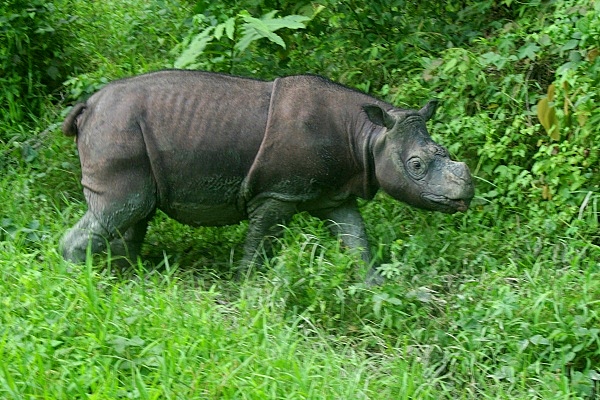
Borneo rhino. Photo and story by Jeremy Hance.
Nothing can really prepare a person for coming face-to-face with what may be the last of a species.
I had known for a week that I would be fortunate enough to meet Tam. I’d heard stories of his gentle demeanor, discussed his current situation with experts, and read everything I could find about this surprising individual. But still, walking up to the pen where Tam stood contentedly pulling leaves from the hands of a local ranger, hearing him snort and whistle, watching as he rattled the bars with his blunted horn, I felt like I was walking into a place I wasn’t meant to be. As though I was treading on his, Tam’s space: entering into a cool deep forest where mud wallows and shadows still linger. This was Tam’s world; or at least it should be.
A living—still surviving—Bornean rhinoceros, Tam is only one of an estimated forty left in the world, maybe less. At 620 kilograms (1430 pounds), Tam is a full grown male rhino. Researchers have estimated his age to be about twenty with at least another decade before him. Surprisingly pinkish in color, he is sparsely covered by large black hairs, while both of his two horns—unlike other Asian rhinos who only sport one—have been rubbed dull against the walls of his pen.
Tam is a survivor—that is certain. He survived his forest habitat being whittled into smaller and smaller pockets. He survived his right foot being caught in a poacher’s snare leaving an inch-wide white scar circling his ankle. And he had survived when he wandered directly into an oil palm plantation in early August of last year, probably propelled by his injury. He had beaten the odds, this one.